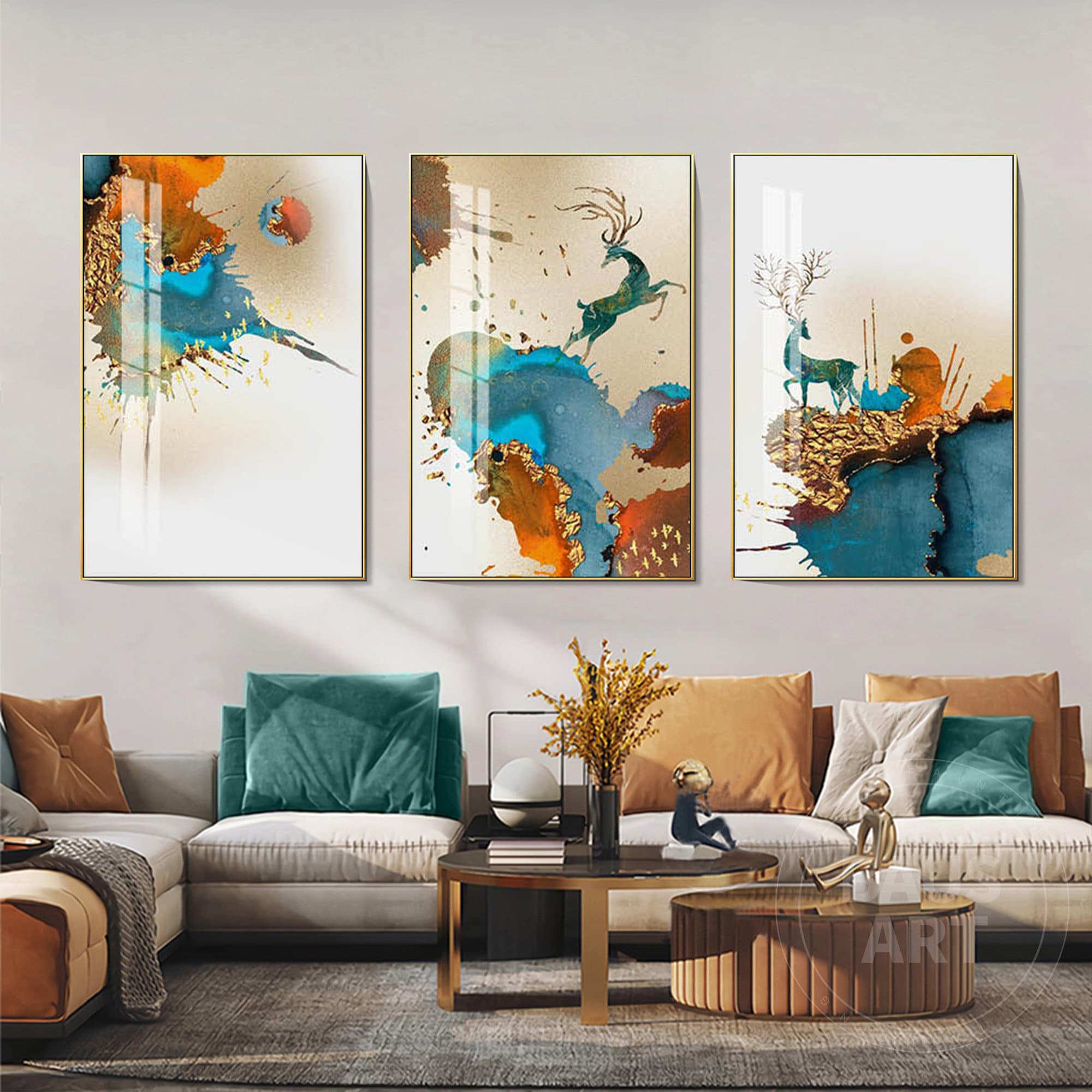Design Elements: Modern Abstract Wall Art

Modern abstract wall art relies on various design elements to create visual interest and convey emotions. These elements include shapes, lines, colors, and textures, which interact to form dynamic compositions.
Amidst the stark beauty of modern abstract wall art, the vibrant hues of autumn beckon us outdoors. Like a canvas painted with nature’s artistry, outdoor fall decor transforms our surroundings into a symphony of reds, oranges, and yellows. As the leaves turn and the air becomes crisp, we can find inspiration in the season’s palette, bringing the warmth and beauty of fall indoors through the abstract lines and shapes of modern wall art.
Shapes, such as geometric forms and organic curves, define the structure and create a sense of movement. Lines, whether straight or curved, can guide the viewer’s eye and create rhythm and balance. Colors, both vibrant and subtle, evoke emotions and add depth to the artwork.
Modern abstract wall art, with its bold colors and geometric shapes, creates a striking visual impact in any space. Its versatility allows for seamless integration with other decorative elements, such as the playful and vibrant designs found in minions wallpaper.
The contrast between the abstract’s sharp lines and the wallpaper’s whimsical characters adds a unique and eye-catching dimension to any room, showcasing the boundless possibilities of modern abstract wall art.
Shapes
- Geometric shapes (squares, circles, triangles) provide stability and order.
- Organic shapes (free-form curves) introduce fluidity and dynamism.
Lines
- Straight lines create structure and precision.
- Curved lines add softness and movement.
- Intersecting lines generate tension and visual complexity.
Colors
- Primary colors (red, blue, yellow) convey boldness and energy.
- Secondary colors (green, orange, purple) offer balance and harmony.
- Neutral colors (black, white, gray) provide contrast and depth.
Textures
- Smooth textures create a sense of elegance and sophistication.
- Rough textures add visual interest and tactile appeal.
- Mixed textures create depth and contrast.
Color Palettes and Symbolism

In modern abstract wall art, color palettes play a pivotal role in shaping the overall mood and tone of the artwork. Artists meticulously select and juxtapose colors to evoke specific emotions and convey messages or ideas.
Colors possess inherent symbolic meanings that have been ingrained in human culture for centuries. For instance, red often symbolizes passion, energy, and danger, while blue conveys tranquility, serenity, and coolness. Green represents nature, growth, and renewal, whereas yellow exudes optimism, joy, and warmth.
Examples of Color Palette Effects, Modern abstract wall art
Artists leverage color palettes to create a range of effects. For example, complementary colors, such as red and green or blue and orange, when placed side by side, generate a sense of tension and dynamism. Neutral colors, like white, black, and gray, provide balance and contrast, allowing other colors to pop.
Monochromatic color schemes, where different shades of a single color are used, create a sense of unity and harmony. Earth tones, such as brown, beige, and green, evoke a sense of grounding and stability.
In Wassily Kandinsky’s iconic painting “Composition VII,” a vibrant palette of primary and secondary colors creates a sense of energy and movement. In contrast, Mark Rothko’s “No. 14” employs a muted, monochromatic palette of grays and blues, conveying a sense of tranquility and contemplation.
Composition and Techniques

Modern abstract wall art often employs various compositional techniques to achieve visual impact and convey meaning. These techniques include balance, asymmetry, and negative space.
Balance, in composition, refers to the distribution of visual weight within an artwork. It can be achieved through symmetrical or asymmetrical arrangements of elements. Symmetrical balance creates a sense of stability and order, while asymmetrical balance adds a dynamic and engaging element to the artwork.
Asymmetry
Asymmetry introduces visual tension and movement into an artwork. By placing elements off-center or in uneven proportions, artists can create a sense of imbalance that draws the viewer’s eye and encourages them to explore the composition more deeply. Asymmetrical balance often incorporates elements of negative space, which is the area around and between the positive elements in an artwork.
Negative Space
Negative space is not merely empty space; it actively contributes to the overall composition. It can be used to create a sense of depth, contrast, and visual tension. By strategically placing positive elements within negative space, artists can draw attention to specific areas of the artwork and guide the viewer’s gaze.